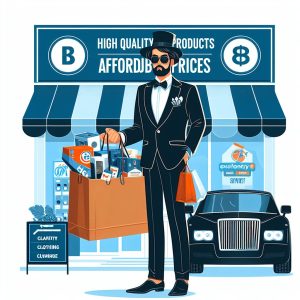16] GOODBYE SALES FUNNEL, HELLO SEARCH
Total average SEO impact: ★★★★★
Sales funnels are history
In fact, they never existed. Now we have the data to support it. Sales funnels are like astronauts walking on the moon. If you tell a story over and over again, if you have people of high regard explaining in detail how it all works, showing images that make sense, people will believe you. Wait a minute, am I saying here that I don’t believe we went to the moon and back? Eh, let’s forget about that before you think I am a total nutcase (but no, I don’t believe it, yes, you may laugh). Let’s get back at sales funnels. We used to learn that people buy products and services in a linear way. How does it work? We have a need to fulfill, we will search in broader terms for solutions to our problem, some brands and products do appeal to us, we dig in a little deeper and we buy. Sounds logic, must be right. It isn’t.
Research from Google shows that people search in a non-linear illogic way sometimes narrowing, sometimes broadening their span of attention. Ultimately they will find the product or service they were looking for but the path to this final conversion is winding and often incomprehensible. It is like booking a family holiday with your mother-in-law. All options will be discussed, wild explorations will be put on the table but at the end you will find yourself in the same hotel on the same beach as each and every year (I want to stress that this is a pure fictional remark…).
To give an example. Let’s say you want to buy a new car. By searching online you may start with your favorite brand. If that would be a Mercedes you will type in something like “Mercedes models”. You will go through the site and you will go to the model you like, maybe a Mercedes C-class. The next search may be “Mercedes C used car” as you might think that a new one is rather expensive. You may visit some used cars platforms and the next linear and logic step would be that you will search and filter on one of those platforms to find the Mercedes C class you want for the price you want to pay. But however likely that sounds it is not likely that this will happen. You now begin to wonder whether a Mercedes car is really what you want or you want to compare it to other cars in the same segment. Maybe you will start a new search like “BMW 3 series” or you search for “Top Gear blogs Mercedes C” if you want to read some reviews. The following day you may see the new Volvo S 60 wondering if that wouldn’t be a good choice. And the search goes on and on. This may take days, weeks, months and even years. To tell you the truth, I am already searching for a new car although my current one is just a few years old (don’t tell my wife please). I will not buy a new car for years to come but sometimes I cannot resist the search.
Another example: As I am writing this I just booked a rental car for our family holiday which starts in Las Vegas. What did I do? I started my search at the well-known car rental companies. I filtered it down to SUV’s as that was my preselected choice of car and then I started comparing.
Not much, because I hate comparing prices (I am that guy that always pays too much). Then I got back at Expedia where I had booked our flights and hotels and I started searching and filtering again. I saw a GMC SUV that looked all right and had the cargo space I needed for 4 large bags and hand luggage. Finally I booked this car. Did I stop there? No, in the evening I had second thoughts about the cargo space so I began searching again. I searched on Google images, YouTube and Google Search. I have seen a couple of videos and now I think I am all right. This is all after my booking and payment of the car. A bit too late? Maybe, but very normal human behavior called cognitive dissonance. And I now I will search again for this car when the holiday season is approaching.
What does that mean for our SEO strategy?
Okay, so our search habits are rather irrational. We skip back and forth form generic to specific and form logic to almost insane searches. For us SEO professionals this behavior has important implications. Let us explore the major ones:
1. Make room for generic search terms
I see a lot of SEO-ed websites that target lower-funnel keywords. Think of keyword combinations with “buy” or brandname + model + product type. There are no low or high funnel keywords so do not think that a keyword like this “buy new Nike Zoom Pegassus running shoes” should convert better than “Nike running shoes”. So concentrate on these broader search themes, they are important. But, that doesn’t mean we can forget about the specific ones.
2. Longer conversion paths, more & different touchpoints
As we are searching more and more, conversion paths will get longer. So in analyzing our statistics we will see more clicks (and even off line engagements) from different channels. This is a classic conversion path:
Google Ads > Organic > Direct > ORDER
Looks very funnely, still occurs of course, but look at all other paths. You might see something like this:
Google Ads (2 times) > Direct > Organic > Google Ads > Organic ( 3 times) > ORDER
I come across conversion paths with no less than 80 to 100 clicks from a myriad of channels before someone finally orders. The major question is: Which channel has attributed most to our conversion? The answer: all of them. That makes it harder to pinpoint the most effective marketing strategy of course, but hard is good, that leaves enough opportunities for all market participants.
3. Forget last click conversion
The default conversion counter on most statistical packages including Analytics is last click conversion. The longer conversion paths tend to become the less sense this makes. But it never made sense. Why should that last click be more important than the earlier ones? So set your conversions to a more democratic engagement counter like Lineair or Time Decay. In this confusing no-funnel world we might even consider taking it a step further. Instead of measuring all our output by statistical conversions we might want to look at interactions and pageviews and REAL conversions. I know, I would prefer to know exactly what interaction at what time in someone’s customer journey had the biggest impact on conversion. But if this is not measurable I am fooling myself by pretending I know.
4. Long copy for Long Tails
If you are an SEO consultant you know the discussion about short and long copy. In general long copy attracts more keyword combinations and especially long tail searches. It’s just a matter of math, in long copy you automatically run a higher chance of making the perfect match with a search query. Writing longer copy is like playing the lotteries with more tickets, chances you win are higher. Consider all these back and forth searches, this zooming in and out. In order to do that people use longer and less logic search query’s so concentrating on long tails makes pretty good sense.
5. You are not alone with your customer
We described the longer conversion paths that are part of this bigger picture of no-funnel search. These conversion paths consist of interactions with your website and your company. That is only part of the picture of course. The bulk of our target audience does not exclusively interact with us for that product or service we offer. We might get the order but take it from me, your customer has looked over the fence at your neighbor’s offer. Between all the interactions with your website your customer has looked at other websites, blogs, the brand website, the website of the importer you are working with, Amazon, review sites and you name it. To understand this behavior is really important for our SEO strategy. Make sure that on all searches you offer the best possible information and make your offer visible and understandable. If you write that long copy about running shoes, make it authentic and try to connect to your audience with fine well written copy. Above all: Show what you have to offer without screaming for attention, most people are not ready yet to buy, but they like to see what you’ve got in store. It’s like speeddating a girl, this person that takes a seat at your table is interested in you. Tell her what she wants to know, make sure that you put on your brightest smile but don’t ask her telephone number, yet… she will come back, maybe.
So, what to do?
Think of touchpoints instead of a narrowing sales funnel.
Understand that one single piece of website copy may attract people who will buy or people who orientate or compare.
There is no general time table for search and convert. Some people will consider, compare, reconsider and convert in 10 minutes, some will do the same in 5 months. So be sure that you always have a link or button to the actual commercial page like a sales page or lead generating page, also on your information pages. These pages may act as converting pages as people will skip your logical sales funnel process (it doesn’t exist, remember).
Make outstanding copy that will inform and induce action at the same time, it is up to the visitor to decide to become a customer or not but you may help him or her getting over the threshold.
Most important
Marketing is not about catching customers, it is about helping each single potential customer all along HIS or HERS individual path to our products or services.
17] BUYING YOUR WAY OUT
Total average SEO impact: ★★★
The impact of online advertising on SEO
Google always asserted that there is no direct link between using Google Ads and a better organic ranking on their search pages. They are right. Google is always right on most issues (this is a peculiar sentence I agree but I think it is the most accurate I can come up with). However, in an indirect way there is most certainly a link and it has implications on our SEO strategy.
Let us first discuss what the relation is between online advertising and SEO. It has several impacts and it is most distinctive with search ads. There is a relation with display ads or banners but this is not so profound as with Google or Bing search ads.
The relation between Search Ads and SEO
As you may have noticed I am talking about the relation between search ads and SEO. That is not the same as the relation between search ads and organic ranking although it is also intertwined. I will explore all relations.
1. Search advertising boosts organic traffic
This sounds like a direct link (which Google justly denies) but it is indirect. What happens when we start a Google Ads or Bing Ads search campaign? We will drive traffic to our website. A part of this traffic just don’t like what we have to offer and it leaves us without ever coming back. Another part of this traffic likes what it sees or reads and is getting interested in what we have to offer whether that be our website content or the products or services we propose. There is a good chance that this piece of traffic will be searching for us again in the coming hours, days or even months. They may type in a search term that they think will bring them to our website or they will use our brand name, web domain or a combination with a search term. Maybe that will again trigger a Google or Bing Ad but in many cases people will be looking for the organic result (most people have the decency of not clicking on a paid ad when it is not needed, yes our human race is very empathic). When we will be looking at our Analytics data we will see organic growth. You might say that this organic growth is a bit artificial but that is only partially true.
2. Search engine advertising boosts organic ranking
Now we are talking! As people will use combinations of words that are relevant to our website in order to come back to us they will trigger search results within the SERP’s that will bring them to our website. In some cases these search results will not be on position 1 but maybe on the lower part of the first page or even second page. As people click on lower ranking positions they essentially are voting them up. If this occurs in some volume (and I can tell you that these volumes need not to be too high depending on the niche you serve) we will see our rankings go up on these search terms.
3. Search ads do not suffice on longer conversion paths
As conversion paths tend to get longer and longer (people need more touchpoints in order to buy or leave a lead) people use different searches for the products we offer. In most conversion paths they will use a couple of combinations or Long Tails in their searching process. In most cases we will not be able to advertise on all these search terms as our budget will not allow that. Besides, your ad will not always be shown as Google is directing the process. A solid SEO strategy will help to catch these search queries, especially combinations and Long Tails. Moreover people specifically do not always click on ads. In about 70% of all searches they skip ads (or ads are not available) and they click on an organic search result. Research shows that people tend to click more on organic results when they are looking for information. That doesn’t mean that they are not ready to buy. As we have discussed in this book, sales funnels are not linear, people may be ready to buy but just want to check on something. In many cases they use keyword combinations or Long Tail searches to get a more specific search result that will assist their buying process. If you would be able to come up on search results when your target audience is enquiring further information it will be a boost to your conversions. It will add relevance to your company and products and, more importantly, it will add authority. Is this always possible? No, of course not, it is impossible to always come above in search results on each and every keyword combination or Long Tail within your niche. But that doesn’t mean we cannot enhance our results. So besides search advertising we must also add informative copy on our website. This can be done by adding generic information on product group of product category pages and adding the right and all-encompassing product specifications on our product or service pages. I can assure you that 90% of all online shops make a mediocre or even worse performance in that respect. The same goes for lead generating websites where you will find basic information about services or products offered but no in-depth information. By using Google Ads or Bing Ads they will be able to drive an interested potential customer to these pages but they fail to attract this same person when he or she is going down the path to conversion.
4. SEO does not suffice either
In my view you need both: a solid SEO strategy and a smart search advertising campaign. For my customers I use both Google Ads and Bing Ads but Google is my first pick as they are the dominant search engine in the countries I work for. Why can’t you rely solely on organic traffic? The simple reason is that you will not be able to rank high on all important keywords and combinations (not even after you read this book, sorry). For small companies or independent entrepreneurs it may be an option but for medium sized and larger companies or online retailers who need a constant flow of orders living on organic traffic only will be hard. Besides, they would sell themselves short if they did not tap into the opportunities of search advertising. That is not the same as telling that you should go all-out on search advertising, on the contrary. I have access to Analytics data of hundreds of websites from all sorts of industries and all sorts of companies, small, medium-sized to very large. In general, this is what occurs on 90% of all these websites: Most of organic traffic comes in from 1 or 2 high volume and competitive single keywords and the bulk of all other organic traffic consists of specific keyword combinations and Long Tails. In most industries there are 5 to 25 relevant high volume keywords and of course a score of combinations and Long Tails. Without search advertising you will not trigger these search queries. Should you then go for all blank spots in your search advertising campaign? Not at all! Single out the most relevant and put your money where it has the best return. It is very dependent upon the industry and the company’s mission and sales goals how to support your organic traffic with search ads or vice versa.
5. Search engine advertising is great but bears some risks
The other part of the spectrum, solely relying on search advertising is a mistake as well. I must confess that I have some customers that rely too much on search advertising. Returns are (still) good and when enough money is at hand you can grow quickly and even internationally. The problem is that in the long term this may risk your entire business if advertising is getting too expensive (CPC’s have a strong tendency to go up during the years) or if product margins go down (the fierce competition is driving selling prices down, eroding margins). The highest risks run pure online players that have an aggressive growth strategy. They do not like to put resources in the tedious work of writing website content and putting time and efforts into SEO. Why should they? They can reap the sales of today with advertising while the seeds of a sound SEO strategy are still in the ground. My advice: Balance your short term and long term strategies.
Your SEO strategy is a hedge to your online search advertising strategy.
So, what to do?
Look at your conversion paths in Google Analytics and try to understand the relation between the different channels (organic, paid search, direct traffic and referrals). You will notice that they are intertwined. Leave one stepping stone out of the path and what would have happened to your conversion? Would it still be there? Look where your strongpoints are in your SEO strategy. Which keyword themes outperform, which lag behind? Think of opportunities where search advertising may complement your online marketing strategy.
Use search engine advertising like Google Ads and Bing Ads on important keyword themes where your organic power is weak.
Don’t try to oversell your paid traffic. It’s a mistake to press people in converting because you want a “bang for your money”. Do not make a blinded landing page without navigation. Give them the opportunity to inform AND to buy or convert. If they do not want to make a decision right now let them come back. Show them your great website content. Again, look at conversion paths and notice that most of paid traffic is in the beginning of a customer journey. Think: Paid > Organic against Paid > Conversion!
Most important
Analyze your conversion paths and your ranking on search themes. Balance search engine advertising with your SEO strategy. Look at the total of your conversions, not at conversions per channel or you might be fooling yourself.




